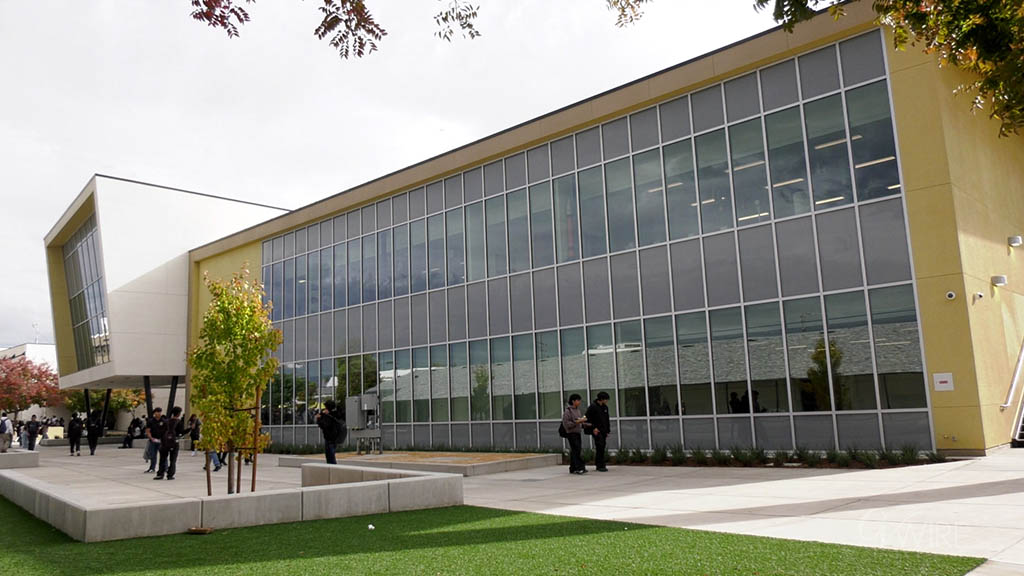Share
|
Getting your Trinity Audio player ready...
|
The Biden administration released an environmental analysis Tuesday that outlined two ways that seven Western states and tribes reliant on the overtapped Colorado River could cut their use, but declined to publicly take a side on the best option.
One option would be more beneficial to California and some tribes along the river that have high-priority rights to the river’s water. The second option is likely to be more favorable to Nevada and Arizona, who share the river’s Lower Basin with California and say it’s time for an approach that more fairly spreads the pain of cuts. That approach would force cuts on a proportional basis, when water levels at key reservoirs along the river dip below a certain point.
The Interior Department defended its authority to make sure basic needs such as drinking water and hydropower generated from the river are met — even if it means setting aside the priority system.
“At the end of the day, the Interior secretary has the authority and the responsibility to operate the system,” Interior Deputy Secretary Tommy Beaudreau told The Associated Press. He said those duties give the federal government the ability to make some decisions that defy the priority system.
The alternatives explore how the federal government could deal with water shortages at Lake Powell and Lake Mead through 2026. Lake Powell, located in Arizona, and Lake Mead, which sits behind Hoover Dam in Nevada, are the largest built reservoirs in the U.S. and serve as barometers of the river’s health. The federal government typically announces in August how much water is available for the coming year.
The 1,450-mile powerhouse of the West serves 40 million people across seven states, which span tribal land, and Mexico. It also generates hydroelectric power for regional markets and irrigates nearly 6 million acres of farmland.
A multidecade drought in the West intensified by climate change, rising demand and overuse has sent water levels at key reservoirs along the river to unprecedented lows. That’s forced the federal government to cut some water allocations, and to offer up billions of dollars to pay farmers and cities to cut back.
Officials expect some relief this year from a series of powerful storms that blanketed California and the Western Rocky Mountains, the main source of the Colorado River’s water. But Beaudreau said states, Native American tribes and other water users recognized that it would be in no one’s interest to stall talks because of the winter’s healthy snowpack.
“The snow is great. It’s a godsend. But we’re in the midst of a 23-year drought,” Beaudreau said.
Last year the U.S. Bureau of Reclamation called for the states to figure out how to cut their collective use of the river’s water by about 2 to 4 million acre feet — or roughly 15% to 30% of their annual use — but an agreement has since been elusive.
An acre-foot of water is roughly enough to serve 2 to 3 U.S. households annually.
In January, six of the seven U.S. states that rely on river — Arizona, Nevada, New Mexico, Utah, Wyoming and Colorado — outlined how they would conserve significantly more water, but California disagreed and released its own ideas a day later.
The proposal released Tuesday builds on some of those ideas and rejects others, including a call by the six-state coalition to account for water loss from evaporation and leaky infrastructure as the river travels to states, cities and farms. One of the options would achieve similar cuts but through different means. Both largely focus on cuts to the Lower Basin users — California, Arizona and Nevada.
The lengthy environmental analysis released by the Biden administration explores two options for cuts, as well as a third that takes no action. States, tribes and other water users now have until May 30 to comment before federal officials announce their formal decision.
The two plans outlined by federal officials Tuesday would achieve at least 2 million acre-feet of cuts in 2024, on top of existing cuts that states and other users previously agreed to.
Priority Rights for California Proposed
Among the main differences between the two plans from the Interior is whether states in the river’s Lower Basin should have their water supplies cut on a proportional basis if water levels at Lake Mead fall below a certain level.
The other plan allocates cuts based on the priority system — in which water users in the West with more senior rights, like California — face fewer cuts.
The Department of Interior is not promoting one option over the other.
“Some of the commentary has depicted an us-versus-them dynamic in the basin,” Beaudreau said. “I don’t see that at all.”
Arizona and California are looking at how to develop “a true seven-state consensus in the coming months,” said JB Hamby, who chairs the Colorado River Board of California.
Hamby is also a board member of the Imperial Irrigation District, a vast farming region in California’s southeastern corner that holds rights to the largest share of the river’s water. The district said Tuesday it was concerned by any plan “that involves ‘equal cuts’ among water users.”
The Quechan tribe along the Arizona-California border also opposes plans that throw out the priority system.
“We’ve got senior water rights and last we checked, we still live in a priority-based system,” said Jay Weiner, the tribe’s attorney.
Tom Buschatzke, director of the Arizona Department of Water Resources, said it’s imperative that the states reach an agreement that avoids legal action.
“Once litigation occurs, it’s going to be very difficult to negotiate something moving forward. Litigation that might take 10 or 15 or 20 years is going to be occurring while the system and the lake behind us is going to crash,” he said.
Reclamation also didn’t say how Mexico might contribute to the savings, but that discussions are ongoing. The country is entitled to 1.5 million acre feet of water each year under a treaty reached with the U.S. in 1944. In recent years, Mexico has participated in water savings plans with the U.S. amid worsening drought in both countries.



















